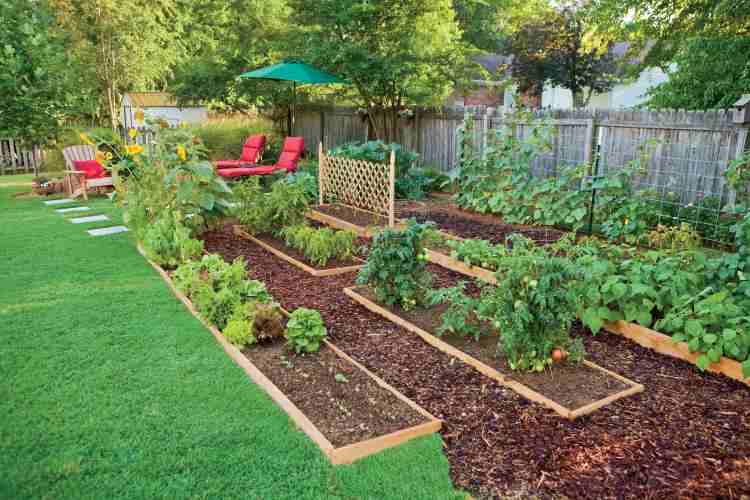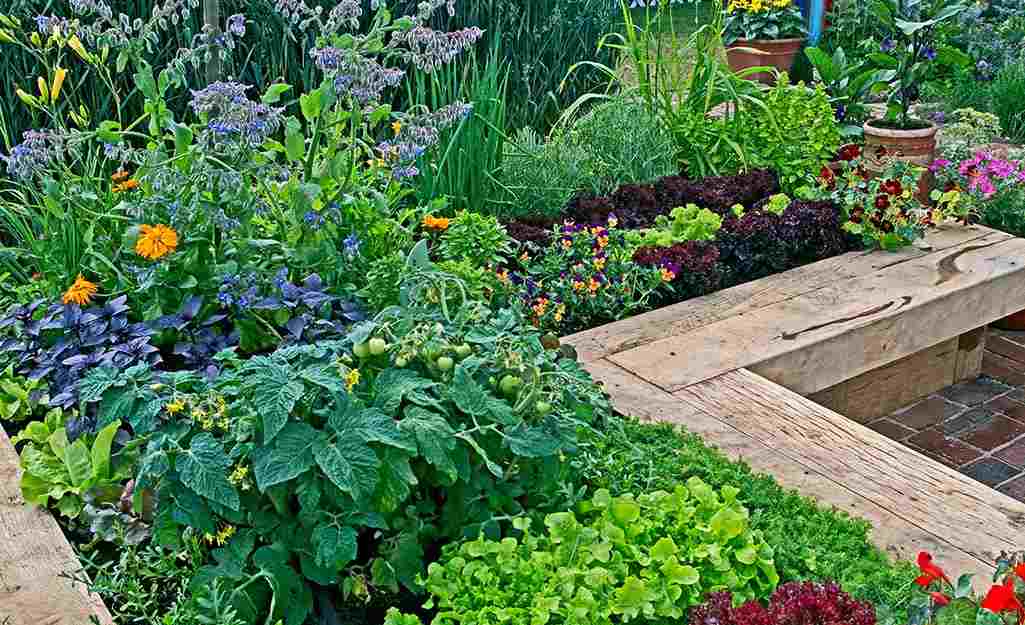Fellow green thumbs and landscape enthusiasts of Liberty Township! Ever thought about transforming your yard into a thriving haven that not only looks stunning but also offers an edible bounty? Well, get ready to dive into the wonderful world of edible landscaping! Picture this: colorful veggies mingling with flowers, fruit trees adding a touch of charm – it’s a landscape that’s both picturesque and practical. In this blog post, Liberty Heritage Nursery Farm explores how you can turn your outdoor space into a fruitful paradise by growing your own fruits and vegetables right here in Liberty Township. Let’s dig in!
Advantages of Edible Landscaping:

Enhanced Sustainability:
Incorporating edible plants into your landscape promotes self-sufficiency by reducing reliance on store-bought produce, thereby lessening carbon footprints associated with transportation and packaging. Embracing edible landscaping service in Liberty Township champions enhanced sustainability by redefining the purpose of your landscape. Traditional lawns often demand excessive water, fertilizers, and maintenance without yielding tangible benefits beyond aesthetics. However, incorporating edible plants into this space not only offers visual appeal but also serves a dual purpose of providing fresh produce.
By utilizing available land for cultivating fruits, vegetables, and herbs, residents actively contribute to sustainability efforts. This approach minimizes reliance on store-bought produce, reducing the carbon footprint associated with transportation and packaging. Moreover, the practice encourages organic and eco-friendly gardening methods, fostering a healthier environment for the local ecosystem while promoting self-sufficiency among community members.
Aesthetic Appeal:
Fruit-bearing trees, colorful vegetable patches, and climbing vines can add layers of visual interest and diversity to your landscape, creating a beautiful, dynamic scenery through which its property value increases.
- Edible landscaping introduces vibrant colors and diverse textures to your yard.
- Fruit trees laden with produce serve as eye-catching focal points.
- Mix and match vegetables like kale, colorful peppers, and tomatoes to create visually appealing patterns.
- Integrating herbs like basil, rosemary, or lavender adds both fragrance and visual interest.
- Varied plant heights and structures create a dynamic landscape, combining beauty with functionality.
Health Benefits:
Growing your own fruits and vegetables allows for a fresh and organic supply of nutritious produce, free from harmful pesticides or chemicals. Embracing edible landscaping in Liberty Township offers a plethora of health benefits beyond just the joy of gardening. Growing your own fruits and vegetables means having immediate access to fresh, nutrient-rich produce without the concern of harmful pesticides or chemicals. Homegrown vegetables like tomatoes, lettuce, and bell peppers are rich in vitamins, antioxidants, and essential nutrients, contributing to a healthier diet.
Moreover, engaging in gardening activities promotes physical exercise and mental well-being. Tending to your edible garden involves tasks such as planting, weeding, and harvesting, which encourage movement and outdoor activity. The therapeutic aspects of gardening, including the sense of accomplishment and stress reduction, are well-documented, leading to improved mental health and reduced stress levels.
Additionally, by consuming homegrown produce, residents can potentially reduce their intake of processed foods, contributing positively to overall health. The act of cultivating and consuming fresh fruits and vegetables nurtures a deeper connection with the food we eat, fostering mindfulness and appreciation for nutritious, whole foods. Overall, the health benefits of edible landscaping extend far beyond the garden, positively impacting physical health, mental well-being, and dietary habits. Environmental Impact: Utilizing space for edibles encourages biodiversity, supports pollinators, and contributes positively to the local ecosystem.
Practical Tips for Edible Landscaping in Liberty Township:
Assess Your Space:
Evaluate your landscape’s sunlight exposure, soil quality, and available space. Choose crops that thrive in Liberty Township’s climate and consider the spatial requirements of different plants.
- Evaluate sunlight exposure, noting areas with full sun, partial shade, or shade to determine suitable plant placements.
- Analyze soil quality by conducting a soil test to understand its composition and nutrient levels.
- Measure available space to plan the layout of your edible garden, considering the spatial requirements of different plants.
- Take note of any obstacles or existing landscaping features that might impact plant growth, such as trees or structures casting shadows.
Design with Purpose:

Integrate edible plants seamlessly into your existing landscape design. Incorporate raised beds, container gardens, or fruit-bearing trees as focal points while maintaining aesthetic harmony with ornamental plants.
Designing an edible landscape in Liberty Township involves purposeful integration, merging practicality with aesthetics. Incorporate raised beds, mixed planting areas, or container gardens strategically, allowing edible plants to complement ornamentals. Fruits trees and bushes can serve as both functional and decorative elements, adding focal points to the landscape. Balance the arrangement to maximize beauty and functionality, ensuring easy access for maintenance and harvest. Thoughtful design not only creates an attractive visual impact but also optimizes space utilization, fostering a landscape that is both visually appealing and productive, blending the best of aesthetics and purpose in your outdoor space
Selecting Plants:
When selecting plants for your edible landscape in Liberty Township, it’s crucial to consider the region’s unique climate and growing conditions. Opt for a diverse array of fruits, vegetables, and herbs that flourish in this area’s specific weather patterns and soil types. Varieties like tomatoes, peppers, lettuce, strawberries, blueberries, and herbs such as basil and thyme are well-suited for Liberty Township’s climate. Native plants often exhibit resilience and adaptability to local conditions, requiring less maintenance and water once established. Incorporating native species like blackberries, elderberries, pawpaws, or serviceberries not only ensures suitability but also encourages biodiversity and supports local ecosystems.
Furthermore, consider the space available and the growth characteristics of different plants. Include a mix of crops with varying maturation times to ensure a continuous harvest throughout the growing season. Incorporate vertical gardening elements, such as trellises or climbing plants like cucumbers or beans, to maximize space utilization in smaller areas. When planning, pay attention to the visual aspect. Mixing vibrant colors and different foliage textures can enhance the aesthetic appeal of your landscape while providing practical benefits. Integrating edible plants with ornamental ones creates a seamless and visually appealing garden that doesn’t compromise on beauty for productivity.
By selecting a diverse range of resilient plants suited to Liberty Township’s climate and integrating them thoughtfully into your landscape design, you can create a flourishing and visually stunning edible garden that offers both aesthetic charm and a bountiful harvest.
Soil Preparation:

Proper soil preparation lays the groundwork for a successful edible garden in Liberty Township. Begin by assessing the soil’s composition and structure. Amend the soil with organic matter like compost or well-aged manure to enhance fertility, improve drainage service, and promote beneficial microbial activity.
Conduct soil tests to determine pH levels and nutrient content, making necessary adjustments for optimal plant growth. Loosen compacted soil to allow roots to penetrate easily and absorb nutrients. Adequate soil preparation ensures a healthy growing environment, providing the foundation for robust and thriving plants in your edible landscape.
Watering and Maintenance:
- Consistent Watering: Provide regular and adequate water to your edible garden, especially during dry spells, ensuring the soil remains consistently moist but not waterlogged. Use methods like drip irrigation or soaker hoses to deliver water directly to the plants’ root zones, minimizing water waste.
- Mulching: Apply a layer of organic mulch, such as straw, wood chips, or leaves, around plants to conserve moisture, suppress weeds, and regulate soil temperature. Mulching helps retain soil moisture, reducing the frequency of watering while promoting healthier plant growth.
- Monitoring and Adjusting: Regularly check soil moisture levels by probing the soil with your finger. Adjust watering schedules based on weather conditions, plant needs, and soil moisture content, avoiding overwatering or underwatering.
- Weeding and Pruning: Routinely remove weeds that compete with plants for water and nutrients. Prune or trim plants as needed to encourage proper growth, increase air circulation, and conserve plant energy.
- Inspecting for Pests and Diseases: Regularly inspect plants for signs of pests or diseases. Early detection allows for prompt treatment or intervention, minimizing potential damage and ensuring a healthy garden. Utilize organic pest control methods if necessary to maintain a thriving and pesticide-free environment.
Seasonal Planning:
Seasonal planning is pivotal for a successful edible garden in Liberty Township, adapting planting schedules to match the area’s distinct seasonal variations. Start by understanding the local climate and frost dates to plan the timing of planting, ensuring crops align with the appropriate seasons.
During the spring, focus on planting cool-season crops like lettuce, spinach, peas, and carrots. These plants thrive in the milder temperatures and can withstand light frosts common in early spring. Summer calls for warm-season crops such as tomatoes, peppers, cucumbers, and squash, which require the higher temperatures and longer daylight hours typical in this season.
As autumn approaches, transition back to cool-season crops for a fall harvest. Consider planting crops like kale, radishes, and certain types of lettuce that can endure cooler temperatures. Planning your garden according to the seasons optimizes plant growth, maximizes yield, and ensures a continuous harvest throughout the year in Liberty Township’s ever-changing climate.
FAQs
What is the best soil for edible plants?
In general, the soil used for growing edibles should be loamy and well-draining. It should also be regularly enriched with organic material such as compost to add nutrients, supporting beneficial microorganisms and improving soil texture and water retention.
Which soil to use for vegetable garden?
The ideal soil for growing vegetables is loam, a mix of clay, sand and silt with active organisms, nutrients, water permeability, and a balanced pH, but garden soils rarely start out as loam
What fruit and vegetables grow the fastest?
- 1 Cress – sowing to harvest: 5-7 days
- 2 Salad leaves – sowing to harvest: 21 days
- 3 Radishes – sowing to harvest: 25 days
- 4 Spinach – sowing to harvest: 30 days
- 5 Carrots – sowing to harvest: 50 days
- 6 Dwarf green beans – sowing to harvest: 60 days.
What is the fastest producing fruit plant?
Peaches. These juicy round fruit are one of the fastest growers in the US bearing fruit within as little as 2 to 3 years. They’re self-pollinating and at full height will be around 25 feet tall. Each year from early on you’ll have ripe fresh peaches ready for picking.
What is the best climate to grow food?
Thus, plants should generally be grown at warm temperatures of 70°F to 75°F to avoid excessively long production times. By growing cold-sensitive crops at warm temperatures, you can actually reduce the amount of energy used for heating — on a per-crop basis — than if they were grown at cooler temperatures.
Conclusion:
In conclusion, embracing edible landscaping in Liberty Township not only adds visual appeal to your landscape but also cultivates a sustainable and rewarding lifestyle. By blending aesthetics with functionality, you create a harmonious space where fruits, vegetables, and herbs thrive alongside ornamental plants. This approach fosters sustainability by reducing reliance on store-bought produce, promoting healthier eating habits, and contributing positively to the environment. As you nurture your garden, you also nurture a deeper connection with nature, reaping the rewards of fresh, homegrown produce while enhancing the beauty and vitality of your outdoor space. So, seize the opportunity to transform your landscape into a flourishing edible paradise right here in Liberty Township!
